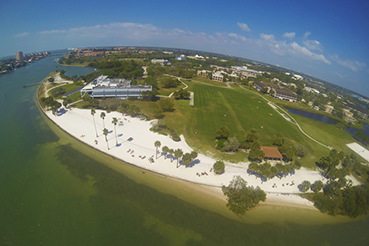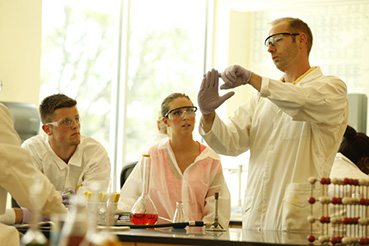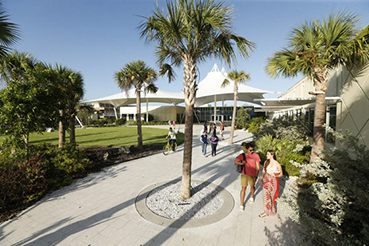Associate Professor of Biology
Robert A. Staub Distinguished Teacher Award, 2011
John Satterfield Outstanding Mentor Award, 2016
Degrees
- Ph.D. Biochemistry, Cell and Developmental Biology; Emory University
- BA. Biology, Wheaton Scholar; Wheaton College, Massachusetts

Courses Taught
- Cases in Neuropathology (BI344)
- Cells & Genes (BI112N)
- Cellular Processes (BI211)
- Developmental Biology (BI424)
- Genetics and Molecular Biology (BI212)
- Neuroscience (BI397)
- Neurotoxins in the Environment as a Winter Term Environmental Perspective project
- Senior Biology Capstone (BI498)
Research Interests
I maintain a vigorous research laboratory with my Eckerd students. We use the model genetic organism, Caenorhabditis elegans, to understand the impact of toxicants and molecular neuropathology on the development, muscular function, reproduction, and neurological function of the animal. I like to refer to C.elegans as the “model of choice” for Nobel Laureates! Our current projects fall into two categories:
- Understanding the Physiological Impact of Common Pesticide and Anti-microbial Residues. We know that pesticides are used on crops, and antibacterial soaps are used on our hands, in an attempt to keep food supplies abundant and our bodies healthy, but what are the cellular and physiological consequences of being bombarded daily by these chemical residues? By using fluorescent transgenic lines of C. elegans we are characterizing the oxidative stress, reproductive impact and neuromuscular changes induced by these chemicals, particularly in a Parkinsonian model.
- My lab, in collaboration with our colleagues in Chemistry and the Tampa Bay Research Institute, are screening natural and synthetic compounds for their ability to ameliorate cellular and molecular pathology in Alzheimer’s and Parkinson’s models.
Other Interests
When I’m not teaching, researching or mentoring (most of my time), I love spending time with my husband. My current favorite TV shows are Fixer Upper and Game of Thrones. I also enjoy scrapbooking and celebrating with my church.
Selected Publications/Posters/Other Works
Zastrow, M, Flaherty, DB, Benian, GM and Wilson, KL. (2006) Nuclear Titin interacts with A- and B-type lamins in vitro and in vivo. Journal of Cell Science, 119(Pt 2):239-249.
Small, TM, Gernert, KM, Flaherty, DB, Mercer, KB, Borodovsky, M, Benian, GM. (2004) Three new isoforms of Caenorhabditis elegans UNC-89 containing MLCK-like protein kinase domains. Journal of Molecular Biology, 342(1):91-108.
Mercer, KB, Flaherty, DB, Miller, PK, Qadota, H, Tinley, T, Moerman, DG, Benian, GM. (2003) C. elegans UNC-98, a C2H2 Zn finger protein, is a novel partner of UNC-97 / PINCH in muscle adhesion complexes. Molecular Biology of the Cell, 14(6):2492-2507.
Flaherty,DB, Gernert, KM, Shmeleva, N, Tang, X, Mercer, KB, Borodovsky, M Benian, GM. (2002) Titins in C. elegans with unusual features: coiled-coil domains, novel regulation of kinase activity and two new possible elastic regions. Journal of Molecular Biology323(3):533-549.
Tomasiewicz, HT, Flaherty, DB, Soria, JP, Wood, JG. (2002) A Transgenic Zebrafish Model of Neurodegeneration. Journal of Neuroscience Research70(6):734-745.
Edens, WA, Sharling, L, Cheng, G, Shapira, R, Kinkade, JM, Lee, T, Edens, HA, Tang, X, Sullards, C, Flaherty,DB, Benian, GM, Lambeth, JD. (2001) Tyrosine cross-linking of extracellular matrix is catalyzed by Duox, a multidomain oxidase/peroxidase with homology to the phagocyte oxidase subunit gp91phox. Journal of Cell Biology. 154(4):879-891.
Flaherty, DB, Soria, J, Tomasiewicz, H, and Wood, J, (2000) Phosphorylation of Human Tau Protein by Microtubule-Associated Kinases: GSK3 and cdk5 Key Participants. Journal of Neuroscience Research. 62:463-472.
Flaherty, D, Lu, Q, Soria, J, and Wood, J, (1999) Regulation of Tau Phosphorylation in Microtubule Fractions by Apolipoprotein E. Journal of Neuroscience Research. 56(3):271-274.







